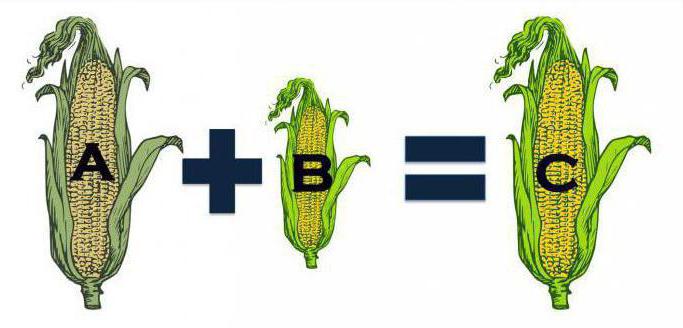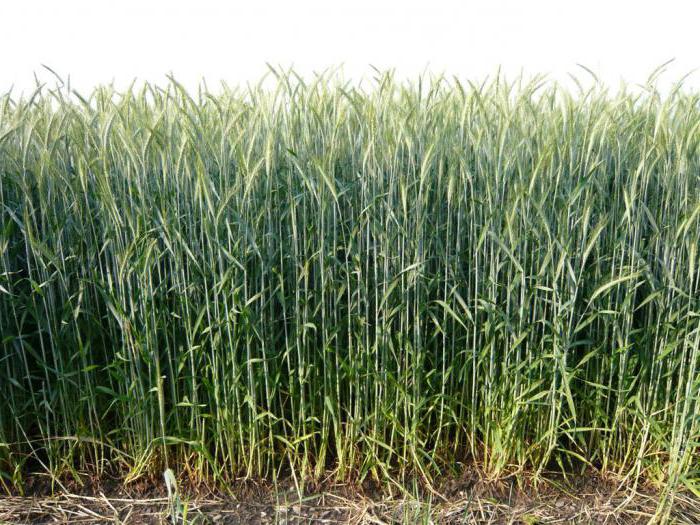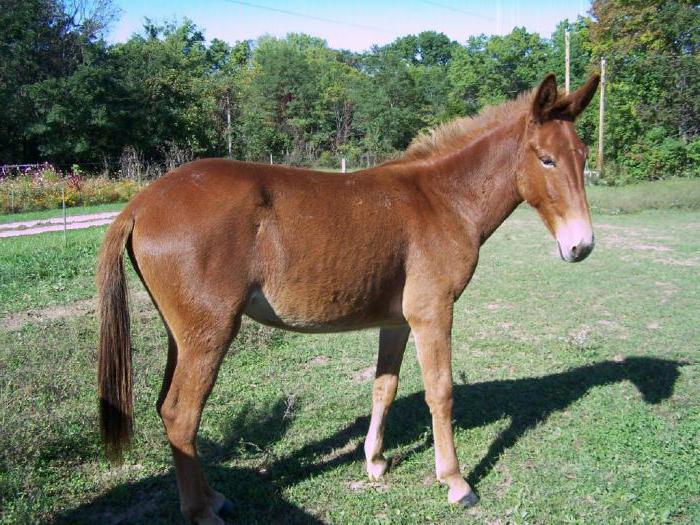The most promising approach to solving the global food problem is, apparently, the further improvement of existing crops grown on already developed lands. Hybrids are what can play a key role in providing food. After all, most of the areas suitable for agriculture are already occupied. At the same time, increasing the amount of water, fertilizers and other chemicals used on them in many places is economically impossible. That is why the improvement of existing crops is of paramount importance. And hybrids are plants obtained just as a result of such an improvement.
Protein content
The challenge is not only to increase productivity, but also to increase the content of protein and other nutrients. For humans, the quality of proteins in edible plants is also very important : animals (including humans) must receive from food the necessary quantities of all the essential (i.e., those that they cannot synthesize themselves) amino acids. Eight of the 20 amino acids needed by man come from food. The remaining 12 can be worked out by him. However, plants with improved protein composition as a result of selection inevitably require more nitrogen and other biogens than the original forms, so they can not always be grown on badlands, where the need for such crops is especially great.
New properties
Quality includes not only yield, composition and quantity of proteins. Varieties that are more resistant to diseases and pests are created, thanks to the secondary metabolites contained in them , more attractive in shape or color of the fruit (for example, bright red apples), better able to withstand transportation and storage (for example, hybrids of tomatoes of increased keeping quality), as well as possessing other properties essential for the given culture.
Breeders' Activities
Breeders carefully analyze the available genetic diversity. For several decades, they have bred thousands of improved lines of the most important agricultural plants. As a rule, it is necessary to obtain and evaluate thousands of hybrids in order to select those few of them that will actually surpass already widely bred ones in their properties. For example, corn yields in the United States from the 1930s to the 1980s. increased almost eight times, although only a small part of the genetic diversity of this culture was used by breeders. There are more and more new hybrids. This allows more efficient use of sown areas.
Hybrid corn

The increase in corn productivity was made possible mainly due to the use of hybrid seeds. The inbred lines of this culture (hybrid in origin) were used as parental forms. From the seeds obtained by crossing between them, very powerful maize hybrids develop. Crossed lines are sown in alternating rows, and panicles (male inflorescences) are manually cut from the plants of one of them. Therefore, all seeds on these specimens are hybrid. And they have very useful properties for humans. By carefully selecting inbred lines, you can get powerful hybrids. These are plants that will be suitable for growing in any desired area. Since the characteristics of hybrid plants are the same, they are easier to clean. And the yield of each of them is much higher than that of unimproved specimens. In 1935, maize hybrids accounted for less than 1% of all this crop grown in the United States, and now virtually all. Obtaining significantly higher yields of this crop is now much less labor-intensive than before.
Successes of International Breeding Centers
Over the past few decades, a lot of effort has been made to increase the yield of wheat and other grains, especially in warm climates. Impressive successes have been achieved in international breeding centers located in the subtropics. When the new hybrids of wheat, corn and rice bred in them began to be grown in Mexico, India and Pakistan, this led to a sharp increase in agricultural productivity, called the Green Revolution.
Green revolution
The methods of selection, fertilizer and irrigation developed during it were used in many developing countries. Each crop requires optimal growing conditions for high yields. Fertilization, mechanization and irrigation are essential components of the Green Revolution. Due to the nature of the distribution of loans, only relatively wealthy landowners were able to grow new plant (cereal) hybrids. In many regions, the Green Revolution has accelerated the concentration of land in the hands of the few wealthiest owners. Such a redistribution of property does not necessarily provide work or food for the majority of the population of these regions.
Triticale

Traditional breeding methods can sometimes lead to amazing results. For example, a hybrid of wheat (Triticum) and rye (Secale) triticale (scientific name Triticosecale) is gaining importance in many areas and, apparently, is very promising. It was obtained by doubling the number of chromosomes in a sterile hybrid of wheat and rye in the mid 1950s. J. O'Mara at the University of Pieces. Iowa with colchicine, a substance that inhibits cell plate formation. Triticale combines high wheat productivity with unpretentious rye. The hybrid is relatively resistant to linear rust - a fungal disease, which is one of the main factors limiting wheat productivity. Further crosses and selection gave improved triticale lines for specific areas. In the mid-1980s This crop, thanks to its high yield, resistance to climatic factors and the excellent straw remaining after harvesting, quickly gained popularity in France, the largest grain producer within the EEC. The role of triticale in the human diet is growing rapidly.
Conservation and use of crop genetic diversity

Intensive crossbreeding and selection programs lead to a narrowing of the genetic diversity of cultivated plants in all respects. For obvious reasons, artificial selection is mainly aimed at increasing productivity, and among very homogeneous offspring of specimens strictly selected for this characteristic, resistance to diseases is sometimes lost. Within the culture, plants become more and more monotonous, as certain of their characteristics are more pronounced than others; therefore, crops in general are more vulnerable to pathogens and pests. For example, in 1970 helminthosporiasis, a fungal disease of maize caused by the species Helminthosporium maydis (pictured above), destroyed about 15% of the crop in the United States, with a loss of about $ 1 billion. These losses are apparently associated with the emergence of a new fungus race, which is very dangerous for some of the main lines of corn, which were widely used in the production of hybrid seeds. In many commercially valuable lines of this plant, the cytoplasm was identical, since the same pestic plants were repeatedly used to produce hybrid maize.
To prevent such damage, it is necessary to grow in isolation and preserve various lines of the most important crops, which, even if the sum of their traits is not of economic interest, can contain genes that are useful in the ongoing fight against pests and diseases.
Tomato Hybrids
Amazing success in increasing genetic diversity through the involvement of wild-growing forms was achieved by tomato breeders. The collection of lines of this culture, carried out by Charles Rick and his staff at the University of California at Davis, allowed us to effectively deal with many of its serious diseases, in particular those caused by imperfect fungi Fusarium and Verticillum, as well as some viruses. The nutritional value of tomatoes has been significantly increased. In addition, plant hybrids have become more resistant to salinization and other adverse conditions. This was mainly due to the systematic collection, analysis and use of lines of wild-growing tomatoes for breeding.

As you can see, interspecific hybrids are very promising in agriculture. Thanks to them, you can improve the yield and quality of plants. It should be noted that crossbreeding is used not only in agriculture, but also in animal husbandry. As a result of it, for example, a mule appeared (his photo is presented above). This is also a hybrid, a cross between a donkey and a mare.